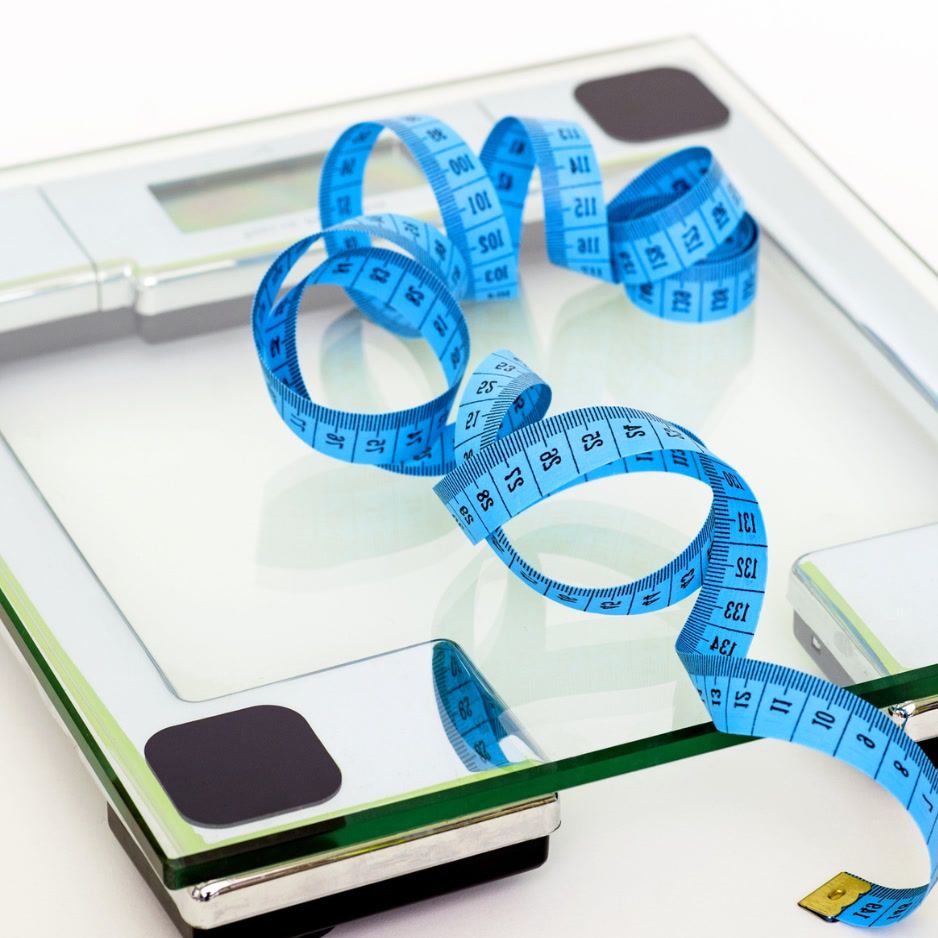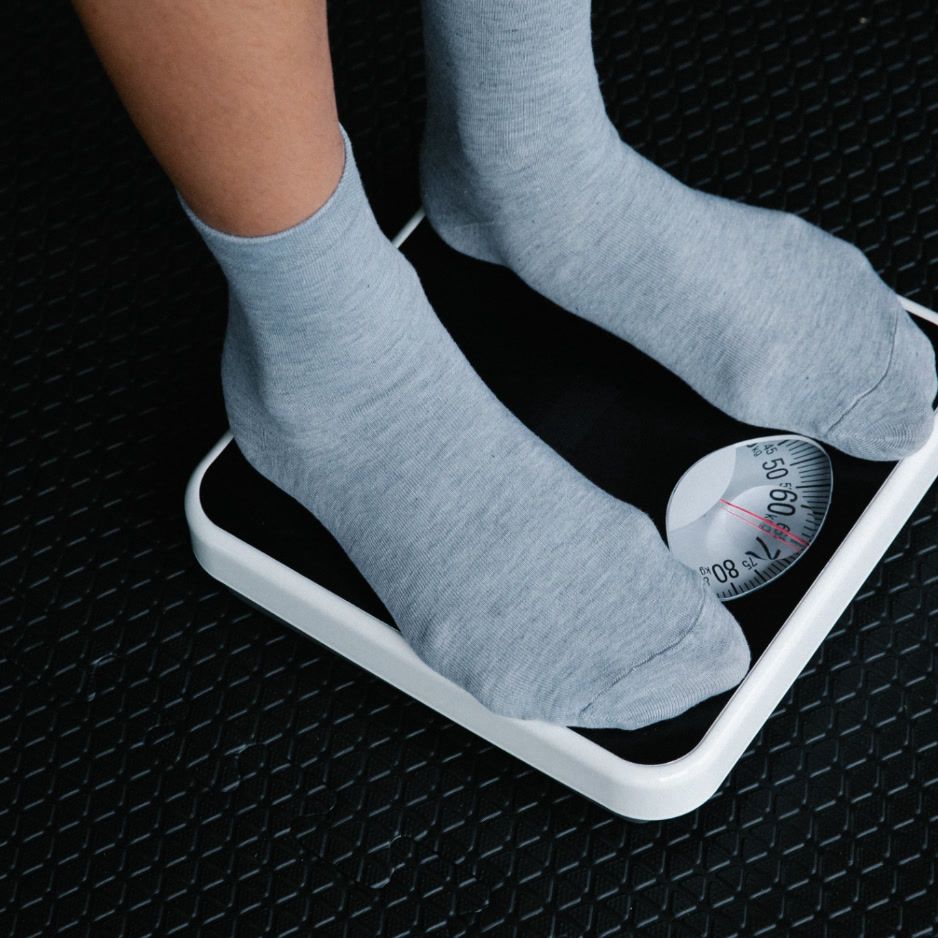What Is a Good VO2 Max?
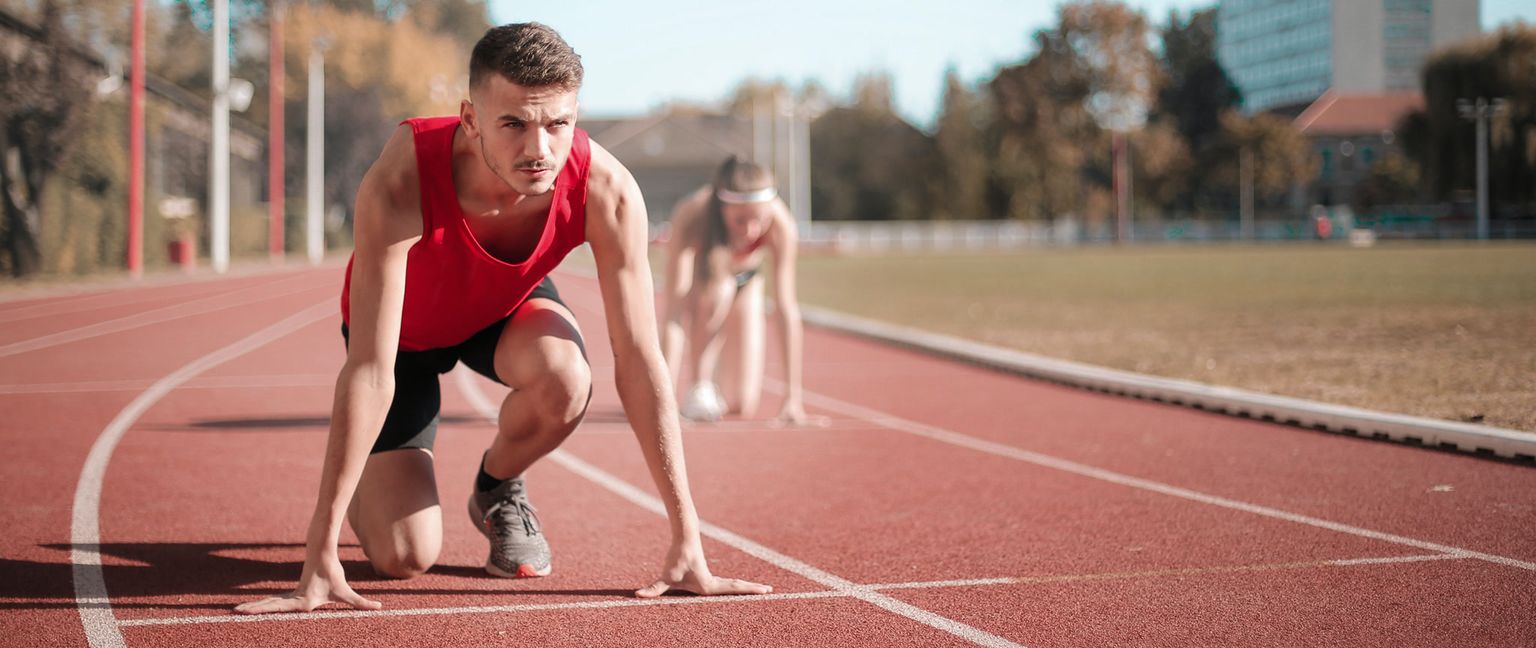
VO₂ Max Chart: Norms, Percentiles, Sport Benchmarks & Longevity Insights (2025 Update)
Your VO₂ max is more than a performance stat; it’s a powerful indicator of cardiovascular health and long-term well-being. Below, you’ll see why VO₂ max matters for lifespan and discover up-to-date charts that reveal exactly where you stand—and how to climb higher.
VO₂ Max, Cardio Health, and Longevity
A higher VO₂ max isn’t just a metric athletes chase—it’s one of the strongest predictors of how long and how well you live.
- Each 1-MET (~3.5 ml/kg/min) increase in aerobic fitness correlates with a 13 % reduction in all-cause mortality risk (Kodama S et al., 2009, JAMA).
- Adults in the top quartile of VO₂ max live 4–6 years longer than peers in the bottom quartile, independent of smoking status or BMI (Nes BM et al., 2014, Circulation).

A VO₂ max test shows how strong your cardiorespiratory “engine” is. Pair it with a DEXA body-composition scan, which pinpoints lean and fat mass, and you’ll have a comprehensive picture of metabolic fitness to guide training and nutrition decisions.
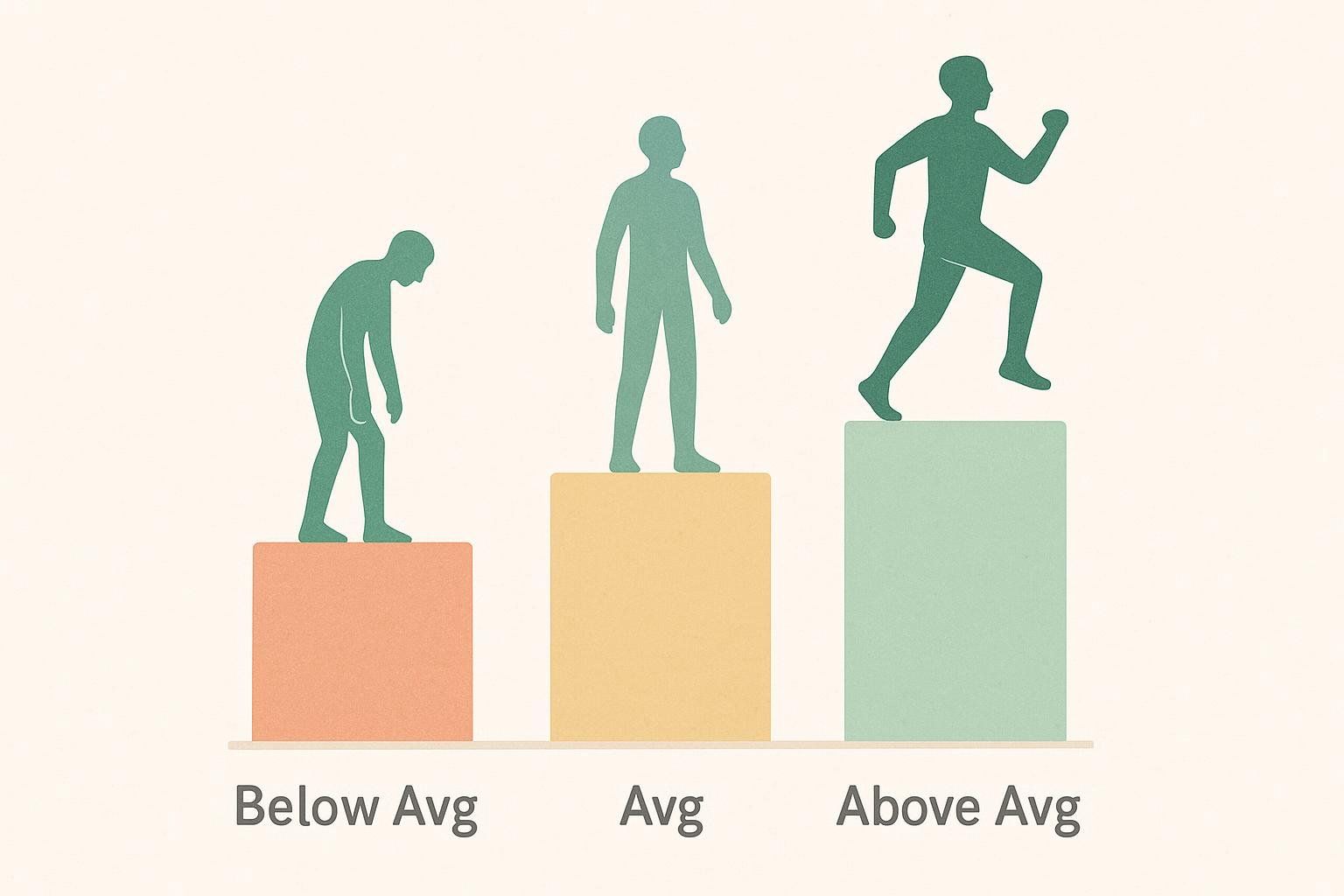
VO₂ Max Norms Chart: At-a-Glance (ml/kg/min)
| Age (yrs) | Men – Below Avg | Men – Avg | Men – Above Avg | Women – Below Avg | Women – Avg | Women – Above Avg |
|---|---|---|---|---|---|---|
| 20–29 | <38 | 38–48 | >48 | <31 | 31–38 | >38 |
| 30–39 | <35 | 35–44 | >44 | <28 | 28–35 | >35 |
| 40–49 | <32 | 32–41 | >41 | <25 | 25–32 | >32 |
| 50–59 | <28 | 28–36 | >36 | <22 | 22–29 | >29 |
| 60–69 | <25 | 25–32 | >32 | <19 | 19–26 | >26 |
| 70+ | <22 | 22–28 | >28 | <17 | 17–23 | >23 |
Source: Categories adapted from the American College of Sports Medicine Guidelines for Exercise Testing & Prescription (11th ed., 2021) combined with median values from the FRIEND registry 2015–2019 dataset (Kaminsky LA et al.).
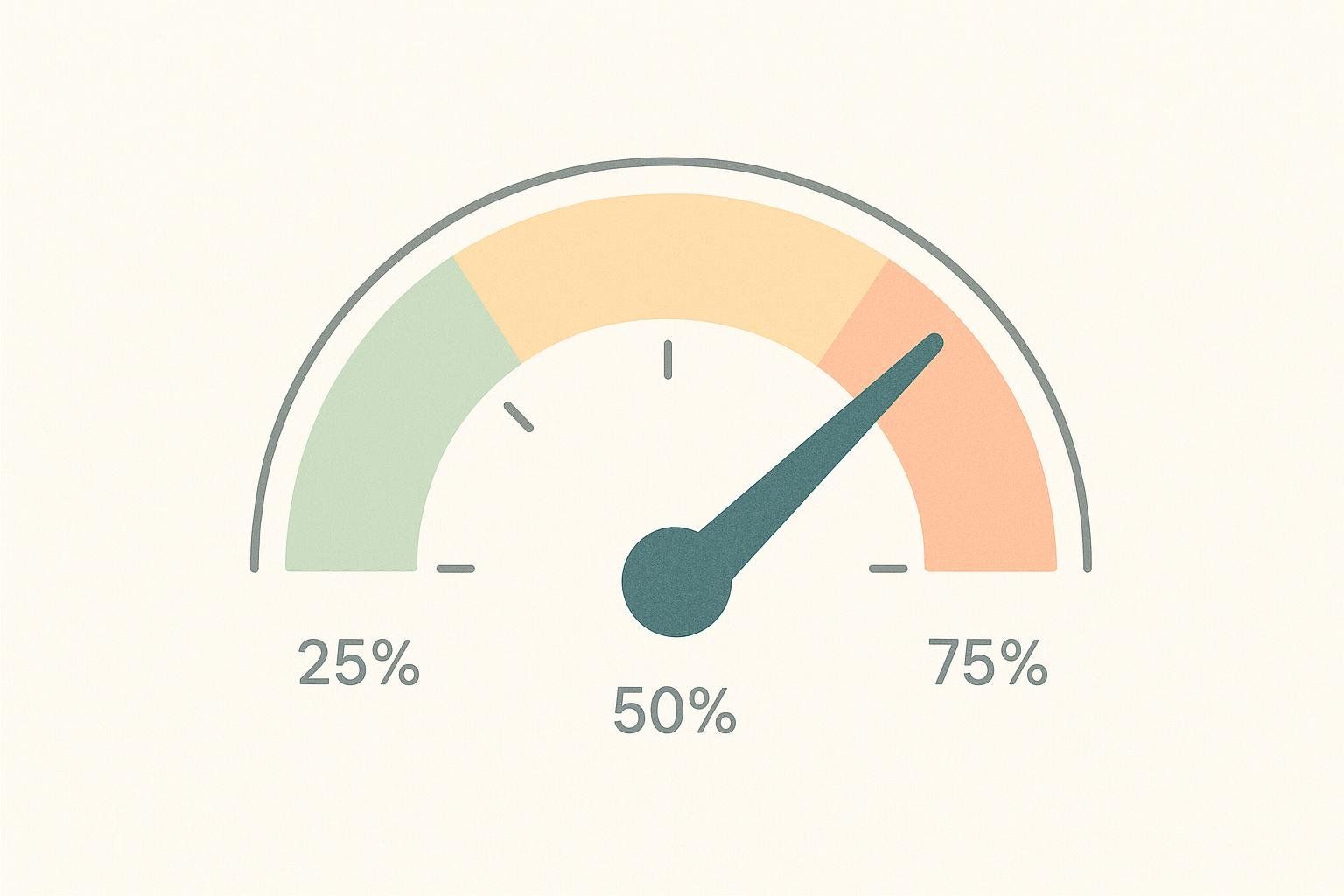
Percentile VO₂ Max Chart (ml/kg/min) – Where Do You Rank?
| Age | Sex | 25th %ile | 50th %ile (Median) | 75th %ile |
|---|---|---|---|---|
| 20–29 | Male | 38 | 48 | 57 |
| 20–29 | Female | 31 | 37 | 45 |
| 30–39 | Male | 33 | 44 | 52 |
| 30–39 | Female | 28 | 33 | 40 |
| 40–49 | Male | 29 | 42 | 49 |
| 40–49 | Female | 24 | 31 | 38 |
| 50–59 | Male | 26 | 36 | 43 |
| 50–59 | Female | 21 | 28 | 34 |
| 60–69 | Male | 23 | 32 | 39 |
| 60–69 | Female | 19 | 26 | 31 |
Data: Fitness Registry and the Importance of Exercise National Database (FRIEND) percentiles, 2015–2019 cohort.
How to read this chart: A VO₂ max of 44 ml/kg/min at age 37 places you at the 50th percentile—right on average. Increase it to 52 ml/kg/min and you reach the 75th percentile.
Sport-Specific VO₂ Max Benchmarks (ml/kg/min)
| Sport | Recreational | Competitive | Elite |
|---|---|---|---|
| Road Running (M) | 45–55 | 55–65 | 65–85 |
| Road Running (F) | 40–50 | 50–60 | 55–75 |
| Cycling (M) | 48–58 | 58–68 | 70–85 |
| Cycling (F) | 42–50 | 50–60 | 60–75 |
| Rowing (M) | 50–60 | 60–70 | 70–80 |
| Rowing (F) | 45–55 | 55–65 | 65–75 |
| Cross-Country Skiing (M) | 55–65 | 65–75 | 75–90 |
| Cross-Country Skiing (F) | 50–60 | 60–70 | 70–80 |
Sources: INSCYD laboratory database (latest compiled data, 2024) and U.S. Olympic & Paralympic Training Center performance summaries (2023).
Why VO₂ Max Declines with Age — and Why It Isn’t Set in Stone
- Lower maximum heart rate (declines ≈ 1 beat per year; Tanaka H et al., 2001, J Am Coll Cardiol).
- Reduced stroke volume as the heart stiffens.
- Fewer mitochondria in muscle cells.
- More sitting, less spontaneous movement.
Targeted training can slow or even reverse much of that decline. A 2022 systematic review found masters endurance athletes lose VO₂ max at roughly 5–15 % per decade, about half the rate seen in sedentary adults (Burtscher J et al., 2022, Front Physiol).
How to Increase Your VO₂ Max – Evidence-Backed Strategies

| Strategy | Weekly Dose | Why It Works |
|---|---|---|
| HIIT (High-Intensity Intervals) | 2–3 sessions, 4–6 × 3 min @ 90–95 % HRmax | Boosts stroke volume & mitochondrial biogenesis (Helgerud J et al., 2007, Med Sci Sports Exerc). |
| Tempo / Threshold Work | 1–2 sessions @ lactate threshold | Expands sustainable aerobic power (Billat LV, 2001, Sports Med). |
| Zone 2 Endurance | 60–120 min total | Increases capillary density & fat-oxidation enzymes (Murias JM et al., 2013, Appl Physiol Nutr Metab). |
| Strength Training | 2 full-body sessions | Enhances muscle oxidative capacity & economy (Ozaki H et al., 2020, Sports Med). |
| Heat or Altitude Blocks | 1–2-week stints | Elevates red-blood-cell mass and plasma volume (Lundby C & Robach P, 2016, J Physiol). |
For detailed programming, see How to Improve VO₂ Max.
Measuring Your VO₂ Max
- Lab metabolic-cart test (gold standard).
- Submax field tests (Cooper 1.5-mile run, Rockport walk).
- Wearable estimates (Garmin, Apple Watch) for trending.
Complementary data: A DEXA body-composition scan doesn’t measure VO₂ max directly, but its precise lean- and fat-mass breakdown helps interpret relative VO₂ max and tailor training programs.
Compare assessment options in BodySpec DEXA vs. Other Body Composition Tests.
Book a combined VO₂ max + DEXA visit at our mobile labs in Los Angeles, Austin, Seattle, and more.
Putting the Chart into Action – Illustrative Examples
The scenarios below are hypothetical and meant to illustrate how training interventions might translate into VO₂ max improvements; individual results will vary.
1. Recreational Runner (Age 29, F)
- Baseline: 37 ml/kg/min → 50th percentile.
- Goal: 45 ml/kg/min (75th percentile).
- Plan: 12-week HIIT + tempo + lifting.
- Potential Result: 43 ml/kg/min (≈ 65th percentile), illustrating progress that could contribute to a marathon personal record.
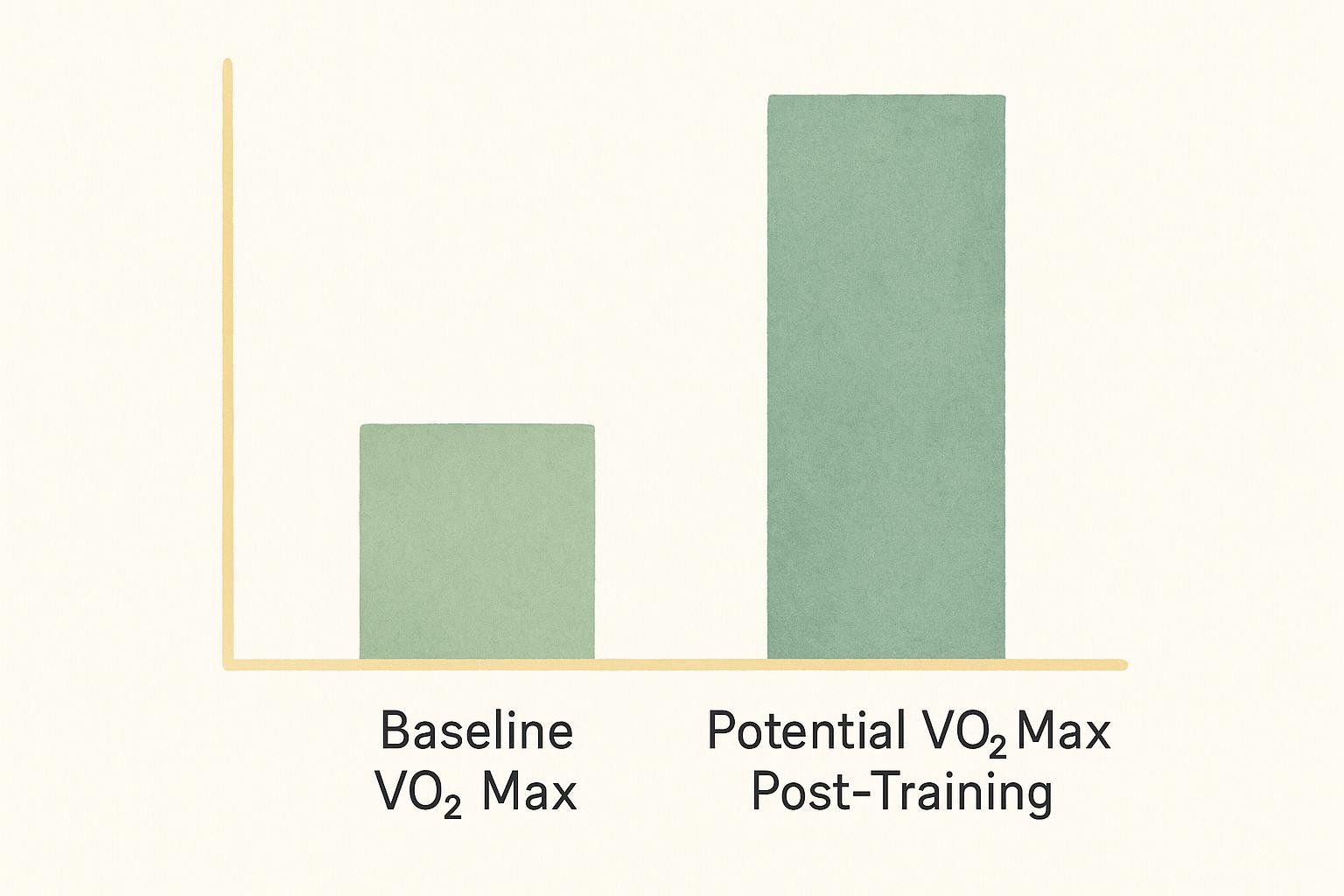
2. Masters Cyclist (Age 52, M)
- Baseline: 36 ml/kg/min → 50th percentile.
- Intervention: Zone 2 volume + simulated altitude.
- Potential Retest: 41 ml/kg/min (≈ 70th percentile), demonstrating an improvement that may raise functional threshold power.
FAQ – Fast Answers
What is a good VO₂ max for my age?
A “good” value is at or above the 50th percentile on the age- and sex-matched chart above. The 75th percentile is considered “excellent,” and the 90th percentile “elite.” Dive deeper in What Is a Good VO₂ Max?.
What is a normal VO₂ max for cardio health?
For general cardiovascular fitness, aim for ≥ 35–40 ml/kg/min for men and ≥ 27–31 ml/kg/min for women—values associated with lower heart-disease risk (ACSM Guidelines, 2021).
How do you increase your VO₂ max?
Combine HIIT, threshold workouts, Zone 2 mileage, and strength training (see table above). Controlled trials show many individuals improve 5–15 % within 8–12 weeks when consistently following these protocols (Sloth M et al., 2013, PLOS ONE).
What VO₂ max do elite cyclists reach?
Lab-tested values for top male cyclists often fall between 70–85 ml/kg/min, while elite female cyclists typically range from 60–75 ml/kg/min (U.S. Olympic & Paralympic Training Center, 2023 data).
Does body fat affect VO₂ max?
Yes—VO₂ max is expressed per kilogram of body weight, so reducing excess fat or adding lean mass raises the relative score. Track changes precisely with a DEXA scan.
Can older adults still boost VO₂ max?
Absolutely. A 2021 meta-analysis found adults aged 60–75 gained ≈ 10 % after 8-week HIIT blocks (Marriott CF et al., 2021, Sports Medicine – Open).
Key Takeaways
- Know your number. Test or estimate VO₂ max.
- Benchmark it. Use the charts to locate your percentile.
- Train smart. HIIT + threshold + Zone 2 + strength.
- Longevity boost. Higher VO₂ max strongly correlates with lower mortality risk—every extra MET (~3.5 ml/kg/min) counts.
- See the full picture. Understanding your body composition via DEXA alongside your VO₂ max gives a more complete view of metabolic fitness and guides personalized strategies.
- Re-test every 8–12 weeks and iterate.
Book your next DEXA scan and turn these charts into actionable progress.

